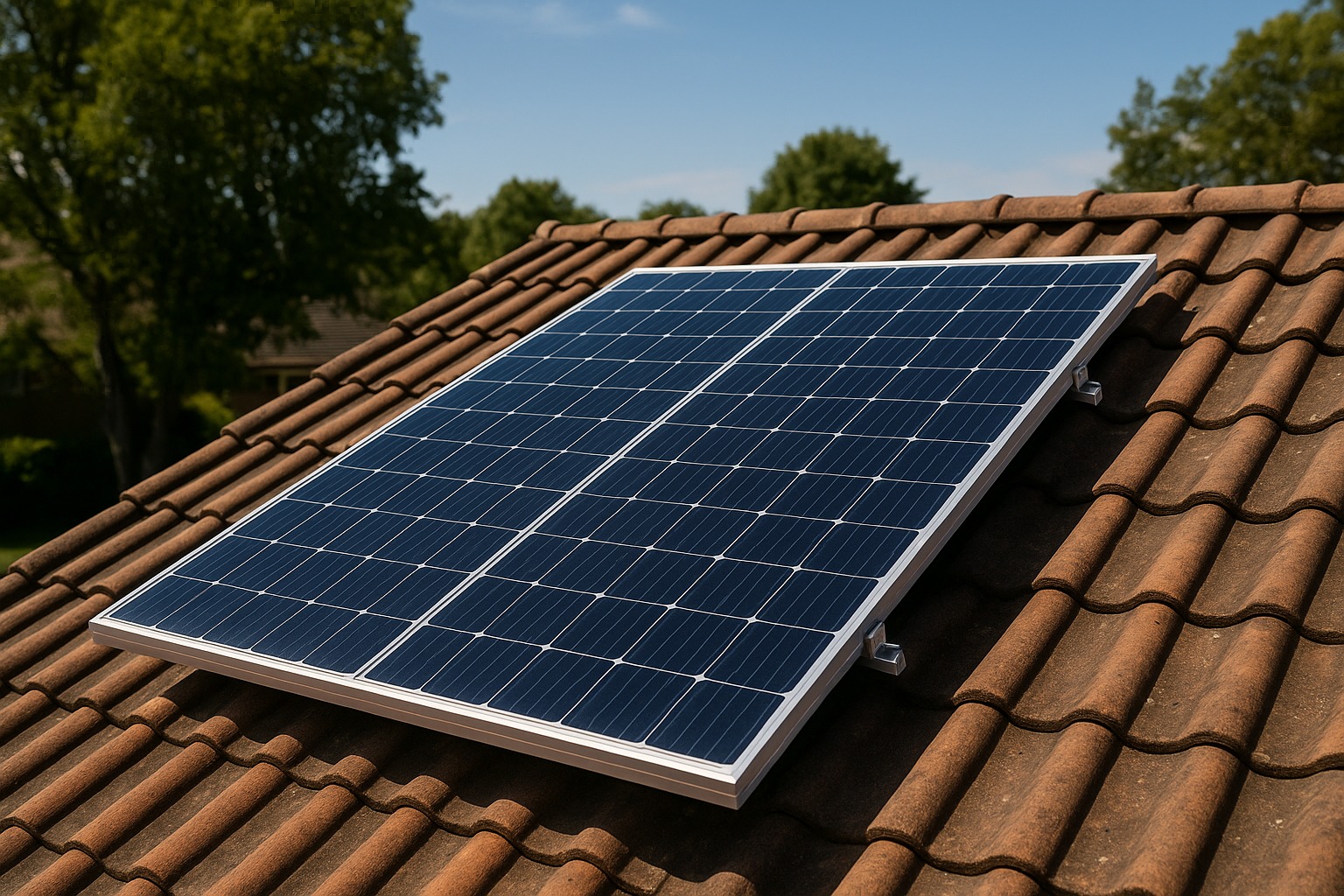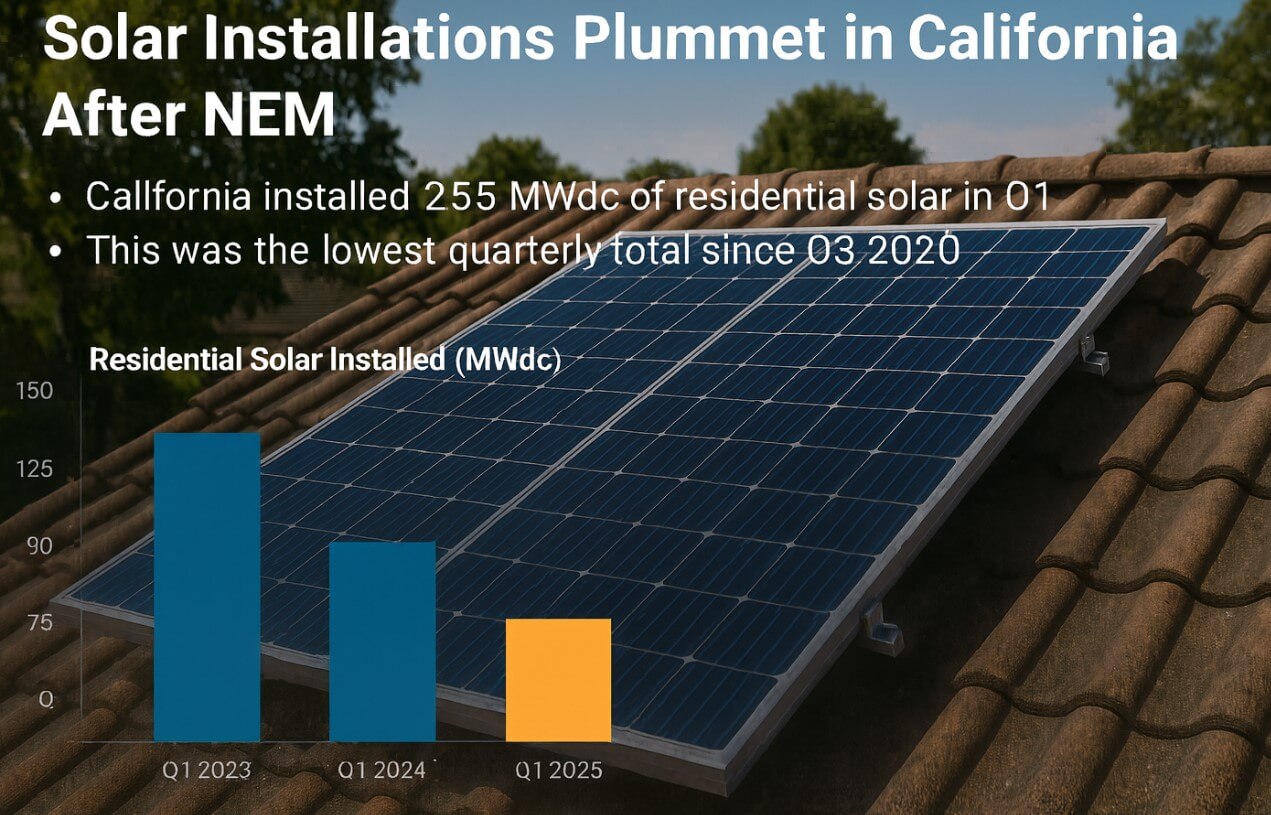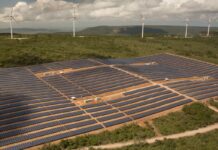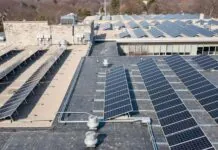
California has spent years promoting itself as a clean energy leader. It was once the national model for solar power adoption.
Now the state is pulling back. A major change to its net metering policy has made it harder and less profitable for homeowners to install solar panels.
The result is a sharp decline in new installations and growing frustration among residents, solar advocates, and industry leaders.
The new rules cut the payments homeowners receive for sending extra electricity back to the grid.
That change, approved by the California Public Utilities Commission and supported by Governor Gavin Newsom, has already had a clear impact.
Many call it a win for utility companies and a setback for independent solar power use in the state.
What Changed and Who Pushed for It
California made a major change to its solar power policy in 2023. The new net metering rules sharply reduced the value of energy sent back to the grid by homeowners with rooftop panels.
That shift came after lobbying from utility companies and backing from Governor Gavin Newsom.
What Is Net Metering and How Did It Change?
Net metering allowed solar power customers to sell unused electricity back to the grid at close to the retail price. That changed under NEM 3.0, the state’s new policy.
NEM 2.0 vs NEM 3.0
| Feature | NEM 2.0 (Old Policy) | NEM 3.0 (New Policy) |
|---|---|---|
| Payment rate per kWh | Around 25-30 cents | Around 5-8 cents |
| Based on | Retail rate | Utility avoided cost formula |
| Payback period for systems | 5-7 years | 9-12 years |
| Installations supported | Strong growth | Major decline |
| Effective date | Before 2023 | April 2023 |
The change cut compensation by about 75 percent. That pushed rooftop solar power out of reach for many middle- and working-class families who had been gaining access in recent years.
Who Backed the Change?
The biggest pressure came from California’s three major utilities:
- PG&E
- Southern California Edison
- San Diego Gas & Electric
Each company claimed rooftop solar customers were shifting grid costs onto non-solar users. The California Public Utilities Commission agreed and approved the cuts.
Governor Gavin Newsom supported the shift through public statements and by appointing commissioners who favored utility arguments. According to watchdog groups:
- Investor-owned utilities gave over 400 thousand dollars to Newsom’s campaigns
- Utility labor unions tied to the industry added hundreds of thousands more
Newsom’s office cited equity concerns and claimed the new policy would stabilize grid costs. Clean energy advocates called it a giveaway to monopoly power companies.
The President of the United States recently also stated that solar energy is unreliable. Some experts in this field are warning about the potential issues of solar farms, but the panels on rooftops are not causing the same problems.
What Solar Power Advocates Say
Several economists and solar organizations disagreed with the state’s position:
- A 2024 report showed rooftop solar saved Californians 2.3 billion dollars
- Solar Rights Alliance said the policy would cripple long-term adoption
- Independent analysts questioned the “cost shift” narrative used to justify the cuts
Rosenfeld from the Solar Rights Alliance said it clearly:
“It was a bullshit executive order. And you can quote me on that.”
Solar Power Industry and Homeowners Feel the Impact
The immediate effect of California’s new policy was a collapse in rooftop solar demand. Companies across the state began reporting steep drops in new installations, layoffs, and project cancellations.
Homeowners expressed frustration, and some warned the state was breaking trust with working families who had invested in solar based on earlier promises.
Drop in Rooftop Installations
Although early estimates exaggerated the collapse, verified reports confirm a deep contraction in residential installations.
- California installed 255 MWdc of residential solar in Q1 2025
- This was the lowest quarterly total since Q3 2020
- U.S. residential installations fell 13% year-over-year, showing a national slowdown
- California’s decline follows the full rollout of NEM 3.0, which cut net metering compensation by up to 75 percent
- Installers across the state reported job losses, demand collapse, and widespread cancellations
Source: Solar Energy Industries Association
Homeowners Say They Were Misled
For many homeowners, the decision to turn to solar power was based on simple math. Under the old rules, payback came quickly. Now, the financial value is uncertain.
Although the bill was later revised, it confirmed what many homeowners already feared: the state could rewrite the terms after people had already invested thousands.
Groups That Responded to the Crisis
Several organizations pushed back immediately:
- Solar Rights Alliance: Organized rallies and petition drives
- Environmental Working Group: Released public statements and reports
- SEIA (Solar Energy Industries Association): Filed legal challenges
- Local homeowners: Showed up at public hearings and legislative sessions
The pressure led to revisions in AB 942, but the larger net metering cut stayed in place. For many families, the damage had already been done. The loss in savings and property value is real.
Utility Profits vs Consumer Freedom
The rooftop solar struggle in California is not about technology. It is about who controls the power-literally and financially.
The state shift in net metering policy sharply cuts homeowners’ value for solar power exports.
What Utilities Gain and What Homeowners Lose
Energy giants PG&E, Southern California Edison, and SDG&E operate as regulated monopolies.
Their profit depends on building and maintaining an infrastructure model that is undermined when homeowners generate their own power.
Fewer rooftop systems mean more utility-controlled generation, more infrastructure spending, and higher profits.
Revenue Impact Comparison
| Item | Rooftop Solar Homeowner | Utility-Scale Provider |
|---|---|---|
| Compensation for excess energy | ~$0.05/kWh under NEM 3.0 | Higher (retail-level rates) |
| Reliability leverage | Lower for utilities | High demand for grid service |
| Profit from infrastructure | None | Guaranteed margin |
| Incentive to expand infrastructure | Negative | Positive |
| Consumer independence | Up | Down |
Under NEM 3.0, homeowners now earn roughly 80 percent less for surplus electricity-about 5 to 8 cents per kilowatt-hour versus around 30 cents under NEM 2.0. Installation growth collapsed after April 2023.
SEIA data shows Q1 2025 residential solar install capacity dropped 13 percent year-over-year, despite still adding over 1.1 gigawatts nationwide. California installations follow this trend.
Across California, over 2.15 million solar projects are active, totaling about 18,750 megawatts of solar capacity.
State subsidies tied to net metering could hit 8.5 billion dollars per year in 2024-paid by non-solar customers, critics argue.
Given how state policies have shifted against rooftop solar, it raises a fair question: Will systems like the SWIFT wind turbine face similar restrictions down the line?
California Cuts the Cord on Its Own Success
California used to be the rooftop solar capital of the country. It had the numbers, the policies, and the public support.
Now, the state has turned its back on the very homeowners who helped build that legacy.
The same government that once urged people to go solar now tells them their energy is worth a fraction of what it used to be. All of this in the name of fairness-or so they say.
The actual winners are not hard to find. Utility companies get guaranteed profits and more control over how power flows across the state.
Politicians keep campaign checks coming. The rest-homeowners, small installers, and families trying to lower their bills get left with longer payback periods and broken promises.
The sun still shines in California. Solar panels still work. The only thing that changed is the state’s willingness to let regular people benefit from it.
Read Next: Ways to Keep the Environment Clean


















